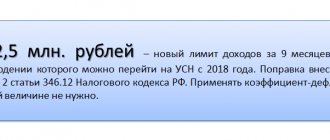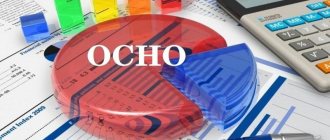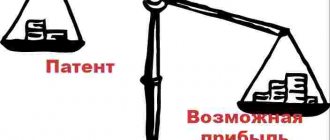Tax Code >> Chapter 26.2
Article 346.11 General provisions
Article 346.12 Taxpayers
Article 346.13 Procedure and conditions for the beginning and termination of the application of the simplified taxation system
Article 346.14 Objects of taxation
Article 346.15 Procedure for determining income
Article 346.16 Procedure for determining expenses
Article 346.17 Procedure for recognizing income and expenses
Article 346.18 Tax base
Article 346.19 Tax period. Reporting period
Article 346.20 Tax rates
Article 346.21 Procedure for calculating and paying tax
Article 346.22 Repealed
Article 346.23 Tax return
Article 346.24 Tax accounting
Article 346.25 Features of calculating the tax base when transitioning to a simplified taxation system from other taxation regimes and when transitioning from a simplified taxation system to other taxation regimes
Article 346.25.1 Repealed
Chapter 26.2 of the Tax Code of the Russian Federation Simplified taxation system
| Chapter 26.1 | Chapter 26.3 |
Comments on Chapter 26.2 of the Tax Code of the Russian Federation - Simplified taxation system
What taxes do not need to be paid when applying the simplified tax system?
In general, organizations that have switched to the simplified system are exempt from income tax and property tax. Individual entrepreneurs - from personal income tax and personal property tax. In addition, both do not pay value added tax (except for VAT on imports). Other taxes and fees must be paid in accordance with the general procedure. Thus, “simplified” workers must make payments for compulsory insurance from employees’ salaries, withhold and transfer personal income tax, etc.
However, there are exceptions to the general rules. So, from January 1, 2015, some “simplified” residents need to pay property tax. From this date, the exemption from payment of this tax does not apply to real estate for which the property tax base is determined as the cadastral value. Such property may include, for example, retail and office real estate (clause 1 of article 378.2 of the Tax Code of the Russian Federation, clause 3 of article 346.11 of the Tax Code of the Russian Federation).
Deflator coefficient according to the simplified tax system
The revenue limit of the simplified tax system for 2021 is based on Article 346 of the Tax Code of the Russian Federation. According to paragraph 4 of Art. 346.13 of the Tax Code of the Russian Federation, the revenue (income) limit for organizations is indexed to a certain deflator coefficient, established every year in the Russian Federation and taking into account changes in consumer prices for goods and services.
In 2021, the deflator coefficient was equal to 1.329, according to the order of the Ministry of Economic Development of Russia dated October 20, 2015 No. 772. In order to calculate the limit under the simplified tax system for 2021, it was necessary to multiply the maximum allowed income (60,000,000) by the deflator coefficient (1.329).
RUB 60,000,000 × 1.329 = RUB 79,740,000
In total, the limit received under the simplified tax system for 2021 was equal to RUB 79,740,000.
In 2021, the deflator coefficient is equal to 1.425, according to the order of the Ministry of Economic Development of Russia dated November 3, 2016 No. 698. And from January 1, 2017, the maximum income under the simplified tax system increased to 150 million rubles. If you follow the scheme applied in 2021, in order to find out the limit on the simplified tax system for 2021, you need to multiply the maximum income by the deflator coefficient. BUT! From January 1, 2021, the validity of clause 2 of Art. 346.12 of the Tax Code of the Russian Federation until January 1, 2020. This means that indexation by the deflator coefficient is not applied, and accordingly there is no need to multiply the marginal income by it in 2019.
Limitations on the number of employees, the cost of fixed assets and shares in the authorized capital
Does not have the right to switch to a simplified system of organization and individual entrepreneurs if the average number of employees exceeds 100 people. The ban on the transition also applies to companies and entrepreneurs whose residual value of fixed assets exceeds 150 million rubles.
In addition, in general, the simplified tax system cannot be applied to enterprises if the share of participation of other legal entities in them is more than 25%.
Keep records and submit reports according to the simplified tax system via the Internet (for new individual entrepreneurs - a year free of charge)
Combining the simplified tax system with other tax regimes
An economic entity can carry out several types of activities at once. Some of them may be on the simplified tax system, and some on other preferential systems.
It is allowed to combine simplification with systems such as UTII and PSN. That is, the subject generally applies the simplified tax system, but for a certain type of activity is a UTII payer or has acquired a patent.
The main requirement when implementing a combination of modes is the organization and maintenance of separate records of the company’s performance indicators, as well as the property used. This must be done to avoid double taxation. When UTII or a patent is closed for this type of activity, a simplification should be applied in the future.
How to switch to simplified tax system
Organizations that do not fall into the above categories can switch to the simplified tax system if their income for the period from January to September did not exceed 112.5 million rubles, multiplied by the deflator coefficient. In 2021, its value is 1.032 (see “Deflator coefficients approved for 2021”). This means that in order to switch to the simplified tax system from 2022, it is necessary that income for January-September 2021 does not exceed 116.1 million rubles (112.5 million rubles x 1.032).
If this condition is met, you must submit a notification to the tax office no later than December 31, and from January of the next year you can apply the “simplified tax system”.
Entrepreneurs who do not fall into the above categories can switch to the simplified tax system, regardless of the amount of income for the current year. To do this, they need to submit a notification to the tax office no later than December 31, and from January next year, individual entrepreneurs will have the opportunity to apply a simplified taxation system.
Newly created enterprises and newly registered individual entrepreneurs have the right to apply a simplified system from the date of registration with the tax office. To do this, you must submit a notification no later than 30 calendar days from the date of tax registration.
Violation of the deadlines for filing an application for the use of the simplified tax system deprives the company or entrepreneur of the right to use the simplified system.
Cancellation of UTII
From 01/01/2021, the taxation system in the form of a single tax on imputed income for certain types of activities (UTII) has been abolished. Chapter 26.3 of the Tax Code of the Russian Federation “Taxation system in the form of a single tax on imputed income for certain types of activities” (Article 346.26, Article 346.27, Article 346.28, Article 346.29, Article 346.30, Article 346.31, Article 346.32, Article 346.33) has lost force. Federal Law No. 373-FZ dated November 23, 2020 established transitional provisions for taxpayers who used UTII.
How not to miss important changes
Monitor changes in your work using ConsultantPlus. Set up a personalized profile and receive notifications about news and amendments as soon as they appear. Instructions in the system are updated immediately after changes and are always relevant. Try it free for 2 days!
How long do you need to use the “simplified”
A taxpayer who has switched to the simplified tax system must apply it until the end of the tax period, that is, until December 31 of the current year inclusive. Until this time, you cannot voluntarily refuse the simplified tax system. You can change the system at your own request only from January 1 of the next year, which must be notified in writing to the tax office.
Early transition from the simplified system is possible only in cases where a company or entrepreneur has lost the right to the simplified system within a year. Then the refusal of this system is mandatory, that is, it does not depend on the desire of the taxpayer. This happens when income for a quarter, half a year, nine months or a year exceeds 200 million rubles, multiplied by the deflator coefficient. In 2021, its value is 1.032 (see “Deflator coefficients approved for 2021”). This means that in 2021 the limit is 206.4 million rubles (200 million rubles x 1.032).
Also, the right to the simplified tax system is lost when the criteria for the cost of fixed assets or share in the authorized capital are no longer met. Or when the average number of employees for a quarter, half a year, 9 months or a year exceeded 130 people.
In addition, the right to a “simplified tax” is lost if an organization falls into a “forbidden” category in the middle of the year (for example, opens a branch or begins to produce excisable goods).
The termination of the application of the “simplified tax” occurs from the beginning of the quarter in which the right to it was lost. This means that an enterprise or individual entrepreneur, starting from the first day of such a quarter, must recalculate taxes using a different system. Penalties and fines are not charged in this case. In addition, if the right to a simplified system is lost, the taxpayer must notify the tax office in writing of the transition to a different taxation system within 15 calendar days after the end of the relevant period: quarter, half-year, nine months or year.
If the taxpayer ceases to engage in activities for which he applied the simplified system, then within 15 days he must notify his inspectorate about this.
Patent tax system in 2021
The patent taxation system (PTS) is a regime only for individual entrepreneurs. It is very attractive because of its simplicity. There are no complex accounting and reporting systems; you just need to buy a special document - a patent, which gives the right to conduct a certain type of activity for 1-12 months. Tax is calculated immediately after purchase.
Only certain types of activities can be carried out under a Patent. Some of them are indicated in Art. 346.43 Tax Code of the Russian Federation (local authorities may add additional types of activities). There are other restrictions that may prevent the use of the special mode:
- An individual entrepreneur should not be involved in production;
- number of employees - no more than 15 people;
- sales floor area - no more than 50 sq.m;
- The regime does not apply within the framework of partnership agreements or trust management of property.
The tax rate on the Patent is 6%, the tax base is the potential annual income. When calculating the cost of a patent, the number of employees, the area of the sales floor, the number of vehicles, and rental space are also taken into account. There is an official Federal Tax Service calculator with which you can quickly and easily calculate the cost of a patent.
Objects “STS income” and “STS income minus expenses”. Tax rates
A taxpayer who has switched to a simplified system must choose one of two objects of taxation. Essentially, these are two ways of calculating a single tax.
The first object is income. Those who choose it summarize their income for a certain period. Then they are multiplied by the tax rate. If revenues do not exceed 150 million rubles, and the average number of personnel does not exceed 100 people, the rate is 6%. Starting from the quarter in which income (calculated on an accrual basis from the beginning of the year) turned out to be more than 150 million rubles. and (or) the average number of employees turned out to be more than 100 people, a rate of 8% must be applied.
The second object of taxation is income reduced by the amount of expenses (“income minus expenses”). Here the tax amount is calculated as the difference between income and expenses multiplied by the tax rate. If revenues do not exceed 150 million rubles, and the average number of personnel does not exceed 100 people, the rate is 15%. Starting from the quarter in which income (calculated on an accrual basis from the beginning of the year) turned out to be more than 150 million rubles. and (or) the average number of employees turned out to be more than 100 people, a rate of 20% must be applied.
The Tax Code of the Russian Federation gives regions the right to set a reduced tax rate depending on the category of taxpayer. A rate reduction can be entered both for the “income” object and for the “income minus expenses” object. You can find out what preferential rates are accepted in your region by contacting your tax office.
You need to select an object of taxation before switching to the simplified tax system. Next, the selected object is applied throughout the entire calendar year. Then, starting from January 1 of the following year, you can change the object, having previously notified your tax office no later than December 31. Thus, you can move from one object to another no more than once a year. There is an exception: participants in a joint activity agreement or a property trust management agreement are deprived of the right to choose; they can only use the “income minus expenses” object.
Tax Code of the Russian Federation Chapter 26.2
1. When determining the object of taxation, the taxpayer reduces the income received by the following expenses:
1) expenses for the acquisition, construction and production of fixed assets, as well as for the completion, additional equipment, reconstruction, modernization and technical re-equipment of fixed assets (taking into account the provisions of paragraphs 3 and 4 of this article);
2) expenses for the acquisition of intangible assets, as well as the creation of intangible assets by the taxpayer himself (taking into account the provisions of paragraphs 3 and 4 of this article);
Federal Law of July 19, 2007 N 195-FZ, paragraph 1 of Article 346.16 of this Code was supplemented with subparagraph 2.1, which comes into force on January 1, 2008.
2.1) expenses for the acquisition of exclusive rights to inventions, utility models, industrial designs, programs for electronic computers, databases, topologies of integrated circuits, production secrets (know-how), as well as rights to use the specified results of intellectual activity on the basis of a license agreement ;
Federal Law of July 19, 2007 N 195-FZ, paragraph 1 of Article 346.16 of this Code was supplemented with subparagraph 2.2, which comes into force on January 1, 2008.
2.2) expenses for patenting and (or) payment for legal services to obtain legal protection of the results of intellectual activity, including means of individualization;
Federal Law of July 19, 2007 N 195-FZ, paragraph 1 of Article 346.16 of this Code was supplemented with subparagraph 2.3, which comes into force on January 1, 2008.
2.3) expenses for scientific research and (or) development, recognized as such in accordance with paragraph 1 of Article 262 of this Code;
3) expenses for repairs of fixed assets (including leased ones);
4) rental (including leasing) payments for rented (including leased) property;
5) material costs;
6) expenses for wages, payment of temporary disability benefits in accordance with the legislation of the Russian Federation;
7) expenses for all types of compulsory insurance of employees and property, including insurance contributions for compulsory pension insurance, contributions for compulsory social insurance against industrial accidents and occupational diseases, made in accordance with the legislation of the Russian Federation;
 the amount of value added tax on paid goods (work, services) purchased by the taxpayer and subject to inclusion in expenses in accordance with this article and Article 346.17 of this Code;
the amount of value added tax on paid goods (work, services) purchased by the taxpayer and subject to inclusion in expenses in accordance with this article and Article 346.17 of this Code;
9) interest paid for the provision of funds for use (credits, loans), as well as expenses associated with payment for services provided by credit institutions, including those associated with the sale of foreign currency when collecting taxes, fees, penalties and fines from property the taxpayer in the manner prescribed by Article 46 of this Code;
10) expenses for ensuring fire safety of the taxpayer in accordance with the legislation of the Russian Federation, expenses for services for the protection of property, maintenance of fire alarm systems, expenses for the purchase of fire protection services and other security services;
11) amounts of customs duties paid when importing goods into the customs territory of the Russian Federation and not subject to refund to the taxpayer in accordance with the customs legislation of the Russian Federation;
12) expenses for the maintenance of official transport, as well as expenses for compensation for the use of personal cars and motorcycles for official trips within the limits established by the Government of the Russian Federation;
13) business travel expenses, in particular for:
travel of the employee to the place of business trip and back to the place of permanent work;
rental of residential premises. This item of expenses also covers the employee's expenses for additional services provided in hotels (with the exception of expenses for service in bars and restaurants, expenses for room service, expenses for the use of recreational and health facilities);
daily allowance or field allowance within the limits approved by the Government of the Russian Federation;
registration and issuance of visas, passports, vouchers, invitations and other similar documents;
consular, airfield fees, fees for the right of entry, passage, transit of automobile and other transport, for the use of sea canals, other similar structures and other similar payments and fees;
14) payment to a state and (or) private notary for notarization of documents. Moreover, such expenses are accepted within the limits of tariffs approved in accordance with the established procedure;
15) expenses for accounting, auditing and legal services;
16) expenses for the publication of financial statements, as well as for publication and other disclosure of other information, if the legislation of the Russian Federation imposes on the taxpayer the obligation to publish (disclose) them;
17) expenses for office supplies;
18) expenses for postal, telephone, telegraph and other similar services, expenses for payment for communication services;
19) expenses associated with the acquisition of the right to use computer programs and databases under agreements with the copyright holder (under license agreements). These costs also include costs for updating computer programs and databases;
20) expenses for advertising manufactured (purchased) and (or) sold goods (works, services), trademark and service mark;
21) expenses for the preparation and development of new production facilities, workshops and units;
22) amounts of taxes and fees paid in accordance with the legislation of the Russian Federation on taxes and fees, with the exception of the amount of tax paid in accordance with this chapter;
23) expenses for payment of the cost of goods acquired for further sale (reduced by the amount of expenses specified in subclause 8 of this paragraph), as well as expenses associated with the acquisition and sale of these goods, including costs for storage, maintenance and transportation of goods;
24) expenses for payment of commissions, agency fees and fees under agency agreements;
25) expenses for the provision of warranty repair and maintenance services;
26) expenses for confirming the compliance of products or other objects, production processes, operation, storage, transportation, sales and disposal, performance of work or provision of services with the requirements of technical regulations, provisions of standards or terms of contracts;
27) expenses for carrying out (in cases established by the legislation of the Russian Federation) a mandatory assessment in order to monitor the correctness of payment of taxes in the event of a dispute regarding the calculation of the tax base;
28) fee for providing information about registered rights;
29) expenses for paying for the services of specialized organizations for the production of documents for cadastral and technical registration (inventory) of real estate (including title documents for land plots and documents on land surveying);
30) expenses for paying for the services of specialized organizations for conducting examinations, examinations, issuing opinions and providing other documents, the presence of which is mandatory for obtaining a license (permit) to carry out a specific type of activity;
31) court costs and arbitration fees;
32) periodic (current) payments for the use of rights to the results of intellectual activity and means of individualization (in particular, rights arising from patents for inventions, industrial designs and other types of intellectual property);
33) expenses for training and retraining of personnel on the taxpayer’s staff, on a contractual basis in the manner prescribed by paragraph 3 of Article 264 of this Code;
34) expenses in the form of negative exchange rate differences arising from the revaluation of property in the form of foreign currency values and claims (liabilities), the value of which is expressed in foreign currency, including on foreign currency accounts in banks, carried out in connection with a change in the official exchange rate of foreign currency to the ruble Russian Federation, established by the Central Bank of the Russian Federation;
35) expenses for servicing cash register equipment;
36) costs for removal of solid household waste.
2. The expenses specified in paragraph 1 of this article are accepted subject to their compliance with the criteria specified in paragraph 1 of Article 252 of this Code.
The expenses specified in subparagraphs 5, 6, 7, 9 - 21, 34 of paragraph 1 of this article are accepted in the manner prescribed for calculating corporate income tax in articles 254, 255, 263, 264, 265 and 269 of this Code.
3. Expenses for the acquisition (construction, production) of fixed assets, for completion, additional equipment, reconstruction, modernization and technical re-equipment of fixed assets, as well as expenses for the acquisition (creation by the taxpayer himself) of intangible assets are accepted in the following order:
1) in relation to expenses for the acquisition (construction, production) of fixed assets during the period of application of the simplified taxation system, as well as expenses for the completion, additional equipment, reconstruction, modernization and technical re-equipment of fixed assets produced in the specified period - from the moment of commissioning of these fixed assets into operation;
2) in relation to acquired (created by the taxpayer himself) intangible assets during the period of application of the simplified taxation system - from the moment this object of intangible assets is accepted for accounting;
3) in relation to acquired (constructed, manufactured) fixed assets, as well as acquired (created by the taxpayer himself) intangible assets before the transition to a simplified taxation system, the cost of fixed assets and intangible assets is included in expenses in the following order:
in relation to fixed assets and intangible assets with a useful life of up to three years inclusive - during the first calendar year of application of the simplified taxation system;
in relation to fixed assets and intangible assets with a useful life from three to 15 years inclusive, during the first calendar year of application of the simplified taxation system - 50 percent of the cost, the second calendar year - 30 percent of the cost and the third calendar year - 20 percent of the cost;
in relation to fixed assets and intangible assets with a useful life of over 15 years - during the first 10 years of application of the simplified taxation system in equal shares of the cost of fixed assets.
In this case, during the tax period, expenses are accepted for reporting periods in equal shares.
If the taxpayer applies the simplified taxation system from the moment of registration with the tax authorities, the cost of fixed assets and intangible assets is taken at the original cost of this property, determined in the manner established by the legislation on accounting.
If the taxpayer has switched to a simplified taxation system from other taxation regimes, the cost of fixed assets and intangible assets is taken into account in the manner established by paragraphs 2.1 and 4 of Article 346.25 of this Code.
The useful life of fixed assets is determined on the basis of the classification of fixed assets included in depreciation groups approved by the Government of the Russian Federation in accordance with Article 258 of this Code. The useful lives of fixed assets that are not specified in this classification are established by the taxpayer in accordance with the technical conditions or recommendations of the manufacturing organizations.
Fixed assets, the rights to which are subject to state registration in accordance with the legislation of the Russian Federation, are taken into account in expenses in accordance with this article from the moment of the documented fact of filing documents for registration of these rights. The specified provision regarding the mandatory fulfillment of the condition of documentary confirmation of the fact of filing documents for registration does not apply to fixed assets put into operation before January 31, 1998.
The useful life of intangible assets is determined in accordance with paragraph 2 of Article 258 of this Code.
In the event of the sale (transfer) of acquired (constructed, manufactured, created by the taxpayer himself) fixed assets and intangible assets before the expiration of three years from the date of accounting for the costs of their acquisition (construction, production, completion, additional equipment, reconstruction, modernization and technical re-equipment, as well as creation by the taxpayer himself) as part of expenses in accordance with this chapter (in relation to fixed assets and intangible assets with a useful life of over 15 years - until the expiration of 10 years from the date of their acquisition (construction, production, creation by the taxpayer himself), the taxpayer is obliged to recalculate the tax base for the entire period of use of such fixed assets and intangible assets from the moment they are taken into account as part of the acquisition costs (construction, manufacturing, completion, additional equipment, reconstruction, modernization and technical re-equipment, as well as creation by the taxpayer himself) until the date of sale (transfer), taking into account the provisions Chapter 25 of this Code and pay an additional amount of tax and penalties.
4. For the purposes of this chapter, fixed assets and intangible assets include fixed assets and intangible assets that are recognized as depreciable property in accordance with Chapter 25 of this Code, and the costs of completion, additional equipment, reconstruction, modernization and technical re-equipment of fixed assets are determined taking into account provisions of paragraph 2 of Article 257 of this Code.
How to account for income and expenses
Taxable income under the simplified tax system is revenue from the main type of activity (income from sales), as well as amounts received from other types of activities, for example, from leasing property (non-operating income). The list of expenses is strictly limited. It includes all popular cost items, in particular, wages, cost and repair of fixed assets, purchase of goods for further sale, and so on. But at the same time, the list does not include such an item as “other expenses”. Therefore, tax authorities are strict during audits and cancel any expenses that are not directly mentioned in the list. All income and expenses should be recorded in a special book, the form of which is approved by the Ministry of Finance.
Under the simplified system, the cash method of recognizing income and expenses is used. In other words, income is generally recognized when money is received in the current account or cash register, and expenses are recognized when the organization or individual entrepreneur repays the obligation to the supplier.
Maintain tax and accounting records under the simplified tax system in an intuitive web service Try for free
When not to use simplification
The law establishes several criteria under which an entity cannot use the simplified system. Thus, a company will not be able to switch to a simplified system if its founders include another company, and its share is 25% or more.
In addition, it is impossible to start using the simplified tax system when a company has branches and representative offices.
Important: types of activities that cannot be performed while on a simplified regime are also defined. These include pawnshops, insurance or lending activities, gambling, production of excise goods and others.
Finally, you cannot be on simplified employment if you do not meet the criteria specified in the Tax Code (number of employees, amount of income, etc.).
How to calculate a single “simplified” tax
First of all, you need to determine the tax base (that is, the amount of income, or the difference between income and expenses). The tax base is calculated on an accrual basis from the beginning of the tax period, which corresponds to one calendar year. In other words, the base is determined during the period from January 1 to December 31 of the current year, then the calculation of the tax base begins from scratch.
In addition, it is necessary to transfer advance payments to the budget based on the results of the reporting periods (quarter, half-year, 9 months).
Tax (advance payment) is calculated this way.
If income does not exceed 150 million rubles, and the average number of personnel does not exceed 100 people, we proceed as follows. We take the tax base for the reporting (tax) period and multiply it by the rate of 6% or 15%. From the resulting value we subtract the advance payment for previous reporting periods.
If in the middle of the year the income fell into the range of “more than 150, but less than 200 million rubles.” or the average number of employees falls in the range from 101 to 130 people, we follow the algorithm:
1. We are looking for the tax base for the period preceding the quarter in which income exceeded 150 million rubles, or the average number of employees exceeded 100 people. We multiply this base by the rate: 6% or 15%;
2. We calculate the taxable base for the entire reporting (tax) period. From it we subtract the base obtained in the previous step. We multiply the found number by the rate: 8% or 20%.
3. Add up the numbers obtained from steps 1 and 2.
Taxpayers who have chosen the “income minus expenses” object must compare the resulting single tax amount with the so-called minimum tax. The latter is equal to 1% of income. If the single tax, calculated in the usual way, turns out to be less than the minimum, then the minimum tax must be transferred to the budget. In subsequent tax periods, the difference between the minimum and “regular” taxes can be taken into account as expenses. In addition, those for whom the object is “income minus expenses” can carry forward losses to the future.
Tax and reporting period
The concepts of what is considered a tax period and what is a reporting period are enshrined in the Tax Code.
Taxable period
For simplicity, the tax period is taken as a calendar year. It is at the end of this period of time that the business entity must make the final tax calculation. Moreover, several reporting periods are included in one tax period.
If a business entity violates the rules for applying the simplified regime, the tax period for it will take less than a year.
Attention: information in the tax return is indicated in cumulative form from the beginning of the tax period.
Reporting period
The following time periods are established as reporting periods: 1st quarter, six months, 9 months. Upon completion of each of them, the advance payment according to the simplified tax system must be calculated.
When to transfer money to the budget
The advance payment is transferred to the budget no later than the 25th day of the month following the reporting period.
At the end of the tax period, it is necessary to transfer the total amount of a single “simplified” tax to the budget, and different payment deadlines are established for organizations and entrepreneurs. Thus, legal entities must transfer money no later than March 31 of the next year, and individual entrepreneurs must transfer money no later than April 30 of the next year. When transferring the final tax amount, all advance payments made during the year should be taken into account.
In addition, taxpayers who have chosen the “income” object reduce advance payments and the final amount of tax on compulsory pension and health insurance contributions, contributions for compulsory insurance in case of temporary disability and in connection with maternity, for voluntary insurance in case of temporary disability of employees, and also for sick leave payments for employees. In this case, the advance payment or the final tax amount cannot be reduced by more than 50%. In addition to this, from January 1, 2015, it was possible to reduce the tax by the full amount of the trade tax paid.
Automatically generate a tax payment invoice based on the data from the declaration and submit reports via the Internet
How to report under the simplified tax system
You need to report on a single “simplified” tax once a year. Companies must submit a declaration under the simplified tax system no later than March 31, and entrepreneurs no later than April 30 of the year following the expired tax period. Reporting on the results of the quarter, half a year and nine months is not provided.
Taxpayers who have lost the right to simplified tax treatment must submit a declaration no later than the 25th of the next month.
Companies and individual entrepreneurs that have ceased to engage in activities falling under the simplified tax regime must submit a declaration no later than the 25th of the next month.
Which KBK to indicate for payment of the simplified tax system
Payment of the simplified tax system has a peculiarity, which is that depending on the object of taxation, the BCC will change. Read about which BCC to use to pay the simplified tax system here .
You will find the KBK according to the simplified tax system “income” for 2018-2019 here.
And for the correct payment of penalties and fines, read this material.
This article will tell you what else is important to indicate when paying taxes..






